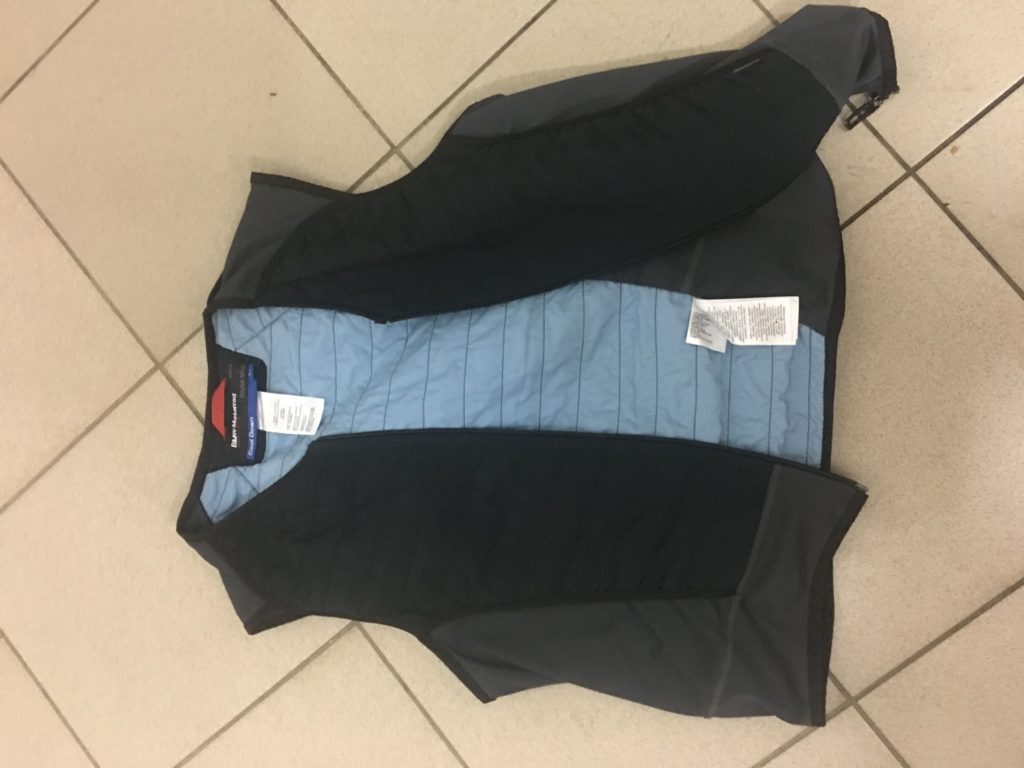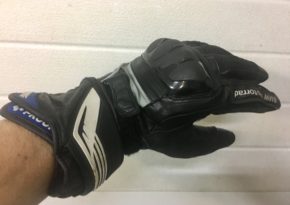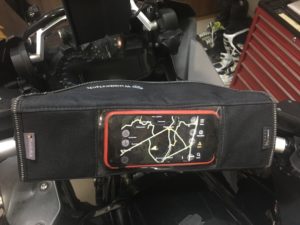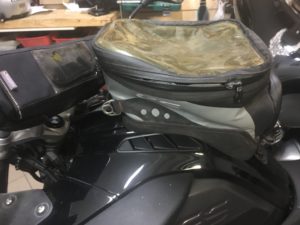What to take on a travel
What should I take with me on my trip?
This is one of the first questions that every traveller, who is going on a long journey, asks himself. Of course, if you travel by car, then it's much easier to answer (and the size of the luggage will directly depend on the volume of the luggage compartment of your car). But if you go by motorbike or, even more so, by bike, then the situation is completely different.
I would like to share with you a little information about the things I took with me on one of my longest trips, which was in Central Asia. I'll say what was useful, what wasn't, etc.
A few years ago, when I was going on my first motorbike trip, it was a big problem to choose what to take with me. I looked through a lot of articles on the Internet, watched some videos on YouTube, read forums and so on. Well, there was a lot of nonsense, probably, written by some kind of office travellers.
Everyone has experienced the following at least once: first you take a bunch of stuff with you and afterwards you bring half of it back without even having used it. But with every new trip the number of things decreases and only the most necessary ones remain.
Certainly, first of all, your necessary luggage depends on where and for how long you go. If you are going for a ride around European countries, then there is nothing to discuss here. You can just take a couple of unlimited credit cards and a raincoat. And that will be enough. :) :)
But if you want to go far and for a long time to not so civilized countries, the terms will differ.
Here are my personal preferences, confirmed by a one-and-a-half-month trip 14,500 km long across the Caucasus, Iran and Central Asia.
A tent. Everything depends on your finances. I recommend taking a compact double model so that it would fit in the side trunk. The tent should be easily and quickly assembled. This is a very important factor when you travel. Besides the tent I had a sleeping bag and a self-inflating mattress in my left trunk. Some people use a foam mat, but for me it's more convenient to sleep on a soft mattress. Actually, these three items are quite big and take up a whole space in the trunk, so you should take them with you only if you like to spend the night in a tent, if you want to save money on hotels or if overnight stays outdoors can not be basically avoided. However, there are not so many places in the world where it would be difficult to find a place to sleep under a roof, when you travel by motorbike.

EQUIPMENT
A BMW helmet (aka Schuberth). It is very convenient because there is a darkened glass that slides out with one push of your finger. In hot countries you cannot ride without it or sunglasses. It's convenient also because I often take pictures and to do it without getting off the motorbike I don't have to take off my helmet, I just have to raise the window. Moreover, it is of good help when you pass the tunnels (and there are a lot of them in the mountains). Last, it's really convenient to talk, smoke and drink water with it on. ENDURO type helmets aren't that convenient in such conditions.

The BMW Rally jacket has proved its versatility once again. When it's 0°C I wear it with a pad and warm thermal underwear. It's fine. And when I have to ride for a long time at the temperature below zero, I put on a down jacket or a cooling vest in addition.
I'm not a man who poorly tolerates cold so I felt comfortable enough. At temperatures up to +36°C I wear a thin thermal T-shirt and open jacket flaps to ventilate my body well. When I made stops, I took off my jacket. When it's more than +36°C, you can use a cooling vest moistened with water. It will be okay to ride further for a couple of hours.
One more advantage of a Rally jacket is the fact it is easy to clean with a damp cloth. Since we were riding several thousand kilometres along dusty roads, it was really helpful. Well, that time the built-in hydrator came in handy too, although it doesn't make sense to take it on other trips to less hot countries.

I took the balaclava but didn't actually use it. Sometimes I take a buff with me (it's a kind of a circle-shaped scarf). With a slight movement of the hand I can turn it into a balaclava, a mask from dust, a neck scarf, a cap and so on.
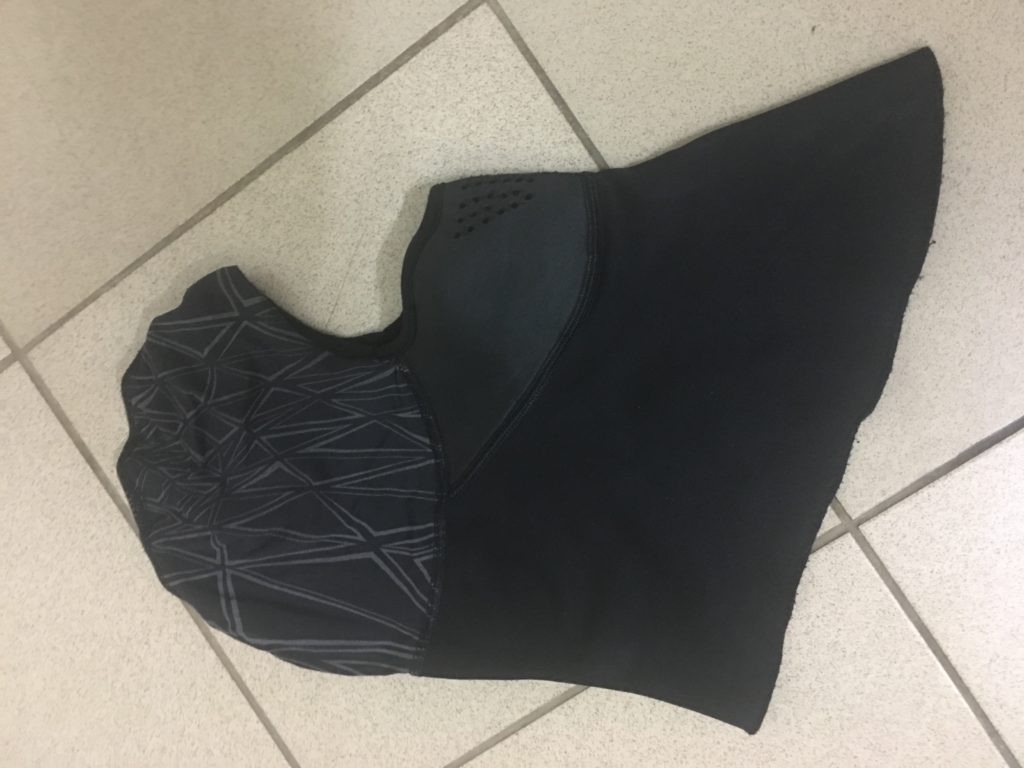
Moto boots DAYTONA. These shoes are suitable for long journeys. My feet didn't sweat at +40°C and didn't freeze at the temperature below zero. You won't get wet in these boots even if you walk through puddles up to 20 sm deep. It is very convenient to climb mountains or just walk, wearing them. They resist the blows of small stones well. Of course, these are not moto boots with super shin and foot protection, but in such conditions they would be difficult to wear. Although I can't surely say how they protect the ankle when falling (I haven't experienced falling in them), but certainly not like the Gaerne12 or BMW ones, which I don't like at all.
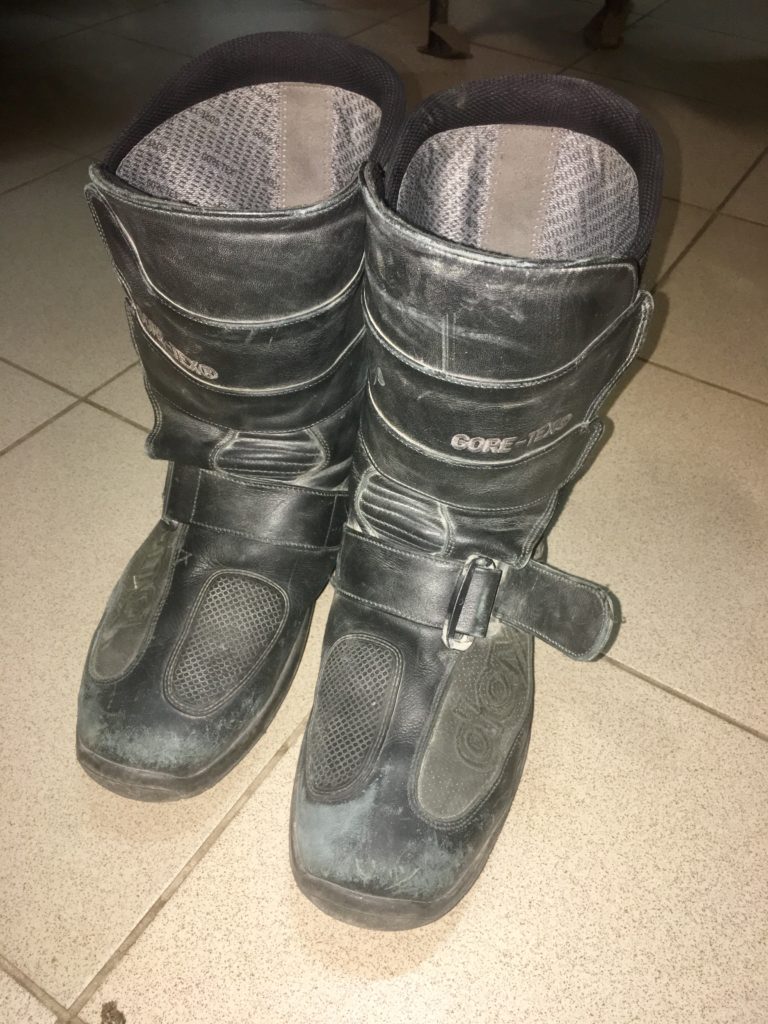
Trousers
I've been using BMW jeans with built-in protection lately. They are very comfortable, particularly, a pocket on the hip with a zipper. Superb! I put my iPhone in it, so I can quickly take it out if I want to take a photo. In the left hip pocket I have a lighter, cigarettes or other frequently used small things. These jeans are also good for walking around the city. You can fit them in boots. They are easy to wash, and dust-dirt is not visible on them. Oleg rode in Rally moto pants and we made sure that they are a very inconvenient thing! My Rally moto pants have been left in the wardrobe for three years. I put them on a couple of times and didn't wear them anymore.
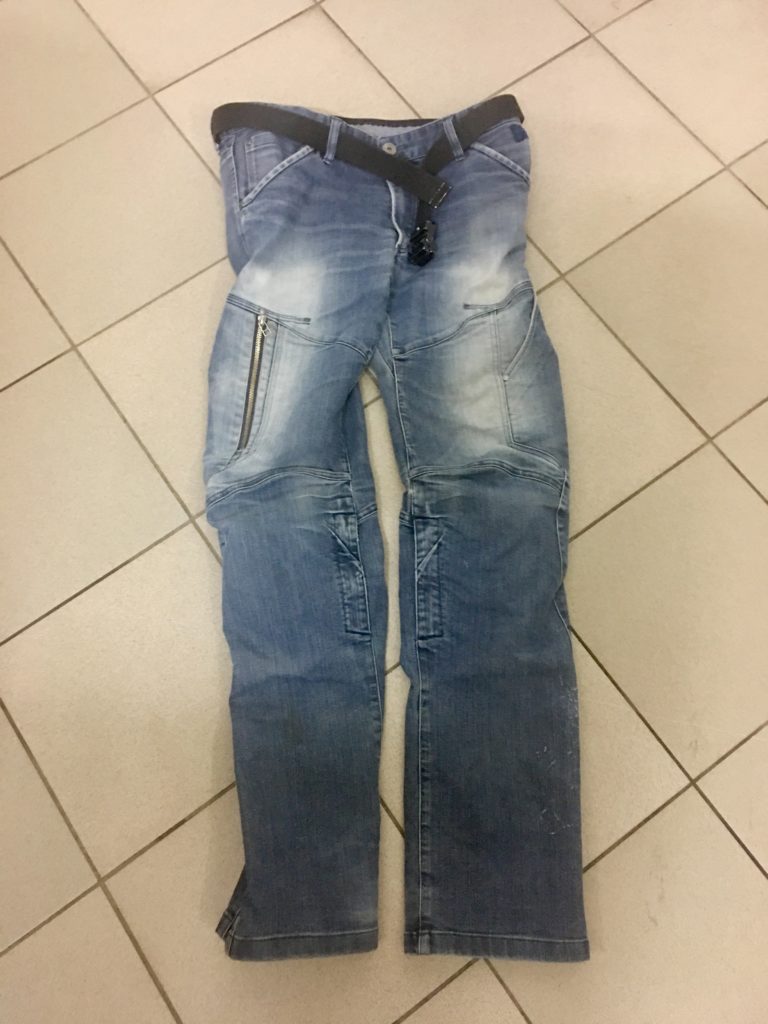
Speaking of thermal underwear, I took one T-shirt and a warmer set named BIONIC. I am very satisfied with it! However, there's one drawback: it costs a lot.
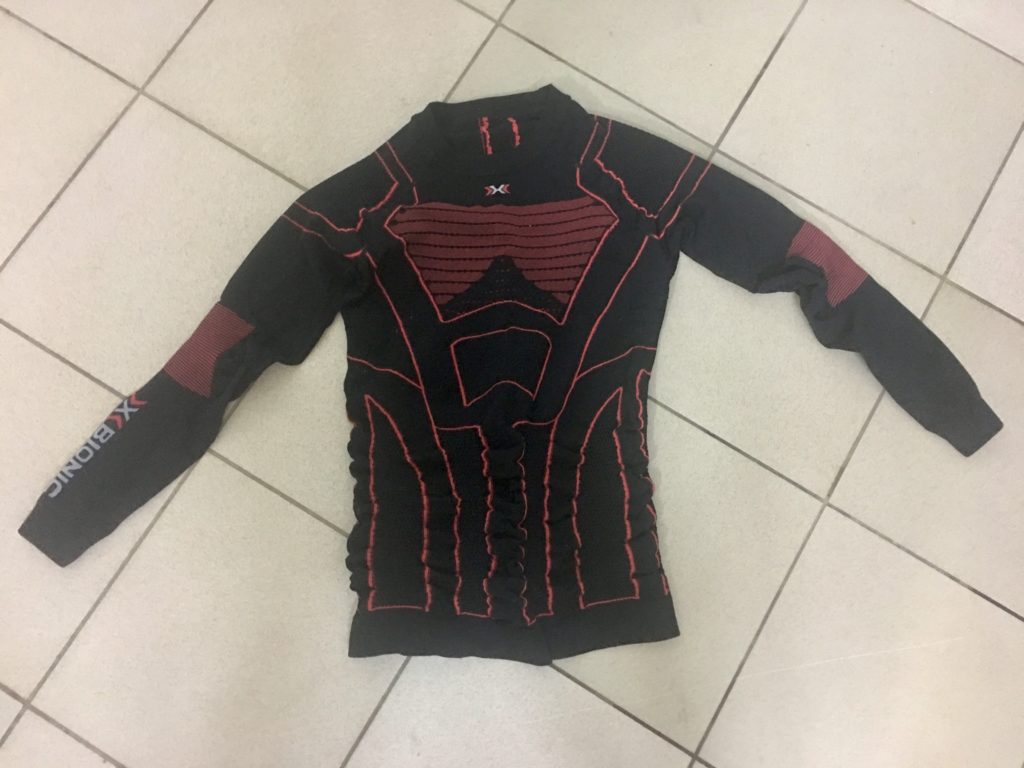
And this is a thermal T-shirt. If the weather is hot, this one is the best to wear.

I also took three pairs of underpants (one of them is a thermal one), three T-shirts (one of them is warm and has a long sleeve), three pairs of socks (one of them is a thermal one). As for the Mormot down vest, it is a very good and compact thing, but it didn't come in handy this time. I had one pair of jeans and one pair of light summer trousers, which I was wearing for my walks in Iran. Actually, you can take only one pair of jeans with you and regularly bring them to the laundry, when you stay overnight at the hotel. And as for socks and underpants, I washed them daily.
Besides the boots, I took only one pair of sports shoes, which I walked in all the time. I didn't take flip-flops.
I took two pairs of gloves. The first one is of the GS brand, and the other one is grey, leather and ventilates well. It is excellent that they are elongated so the wrists do not sunburn. I was riding in them all the way. These gloves are very soft, comfortable and ventilated. And when I travel in the cold season, I take a warm, waterproof pair of BMW gloves.
The Scala Rider PACKTALK intercoms, which we were using during the trip are much better than the previous ones of the 9x model. Their control algorithm isn't that complicated and the devices are convenient, adapt quickly. You don't have to configure them every time, knocking on each other and so on. I remember that during one of my trips to Africa my friends had intercoms from another brand SENA and I easily connected mine with theirs.
A bag.
I had bought this one before the journey:

I like it very much! It is simply and quickly attached to the back seat with two latches and provides easy access to the inside content. Moreover, it doesn't get wet and is capacious enough.
My companion Oleg used a grey BMW bag with a zipper. It has inconvenient access and lightning. I have one like Oleg's at home, but don't use it anymore.
The bag contained all the necessary things for staying overnight. I arrived, put my helmet into the central trunk, took the bag and went to the hotel.
In the side trunks I placed a tent, a self-inflating mattress (instead of a foam one), a sleeping bag, spare parts and tools in a separate bag, a spare inner tube (I needn't it this time), a gas burner, a mug, a raincoat, a lock on the brake disk, straps, a first aid kit and some other small things.
First aid kit. It is a necessary thing in a journey. I have realised this fact more than once!
This one is very compact! Inside it there is a list of medicines with brief instructions for use. Here you can read it. Despite the list seems to be large, there was enough space for everything.

FIRST AID KIT
— An electronic thermometer
* Adhesive plaster (in a roll and plates) to cure calluses and rubbing of feet with shoes.
* A few packs of bandage (just in case)
* Hydrogen peroxide to disinfect wounds and stop bleeding.
* Chlorhexidine to disinfect wounds
* Iodine pencil
* "Zelyonka" (solutio viridis) pencil
* Cotton swabs and just a little medical cotton.
FOOD POISONING AND UPSET STOMACH
* Charcoal pills (5…10 packs). They are better than any contemporary and expensive remedies and give a relief from all the abdominal pain, indigestion and food poisoning. (Take one pill per 10 kg of your weight)
* Smecta to get rid of diarrhea, heartburn, bloating and abdominal discomfort. Dilute the powder in water. The normal dose is 6 sachets per day.
* Imodium to get rid of diarrhea. Take 2 pills at once and then 1 after every liquid stool.
* Festal or Mezim to get rid of heaviness in the stomach because of indigestion. Take it during or right after a meal without chewing and wash it down with a sip of water. The normal dose is usually considered as 1 or 2 pills 3 times a day.
PAINKILLERS and ANTIPYRETICS
*Analgin is a painkiller. Take 1 pill 2-3 times a day after meals. The maximum single dose equals 1 g (2 pills) and a daily one is 3 g (6 pills).
* Baralgin is an analgesic from headaches, pains in kidneys, wounds, etc. Take 2-3 pills a day.
* Nurofen (in capsules) to get rid of headaches. A very effective remedy!
* Citramon is an analgesic used in case of low blood pressure, headache.
* Aspirin is an antipyretic that dilutes the blood and helps in case of headaches. Take it 3 times a day after meals.
* "Mig 400" to get rid of headache, toothache and pain in muscles and joints.
* Paracetamol to get rid of backache, pain in muscles, headache and toothache. It also helps when you have a high temperature. Take no more than 4 g of the medicine per day, dividing it into three doses.
*** Wash down all medicines with plenty of water after taking them.
COLD and COUGH
* Kameton spray helps in case of cough or sore throat.
* Pills for cough (the medicine is named just the same way).
* Rinza is to take when you feel the first symptoms of a cold.
ALLERGY
* Claritin (pills that help in case of allergic reactions).
* Tavegil is an antihistamine too. I took it for allergies as well.
*Suprastin to cure any skin disease that is accompanied by rashes and itching. It also helps in cases of swellings from insect bites and allergies to plant pollen, etc. Take it in a dose of 0.025 g during meals 2-3 times a day.
OTHERS
* Celestoderm is an ointment, which is effective for dermatitis (skin irritations). And it also helps to remove hives if a jellyfish stings.
* Galazolin is a remedy for a running nose. Naftizin relieves a running nose better though.
* Baby cream perfectly helps if the skin of your hands and feet gets dry.
* Centrum is a multivitamin complex medicine for maintaining your overall health.
* "Golden Star" is a balm that you can rub on if you have a backache. It warms you up and works flawlessly. It also helps with itching from insect bites.
* Zovirax (a small tube) to cure cold sore on the lips
* Validol is a medicine to get rid of heartache.
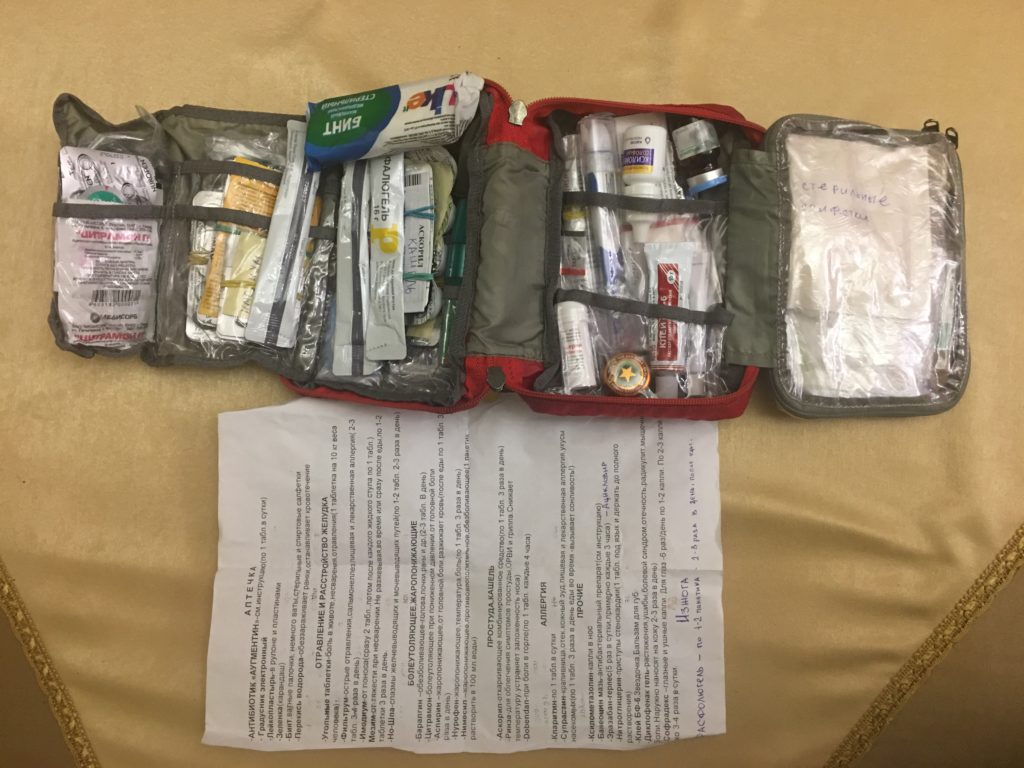
__________________________________________________________________________________
A convenient organiser for bathroom products. It has a hook, with which it can be hung on the tree or smth like that.
It is compact too and capacious enough for the bunch of all the combs, scissors, shampoos that you drag from hotels, etc.
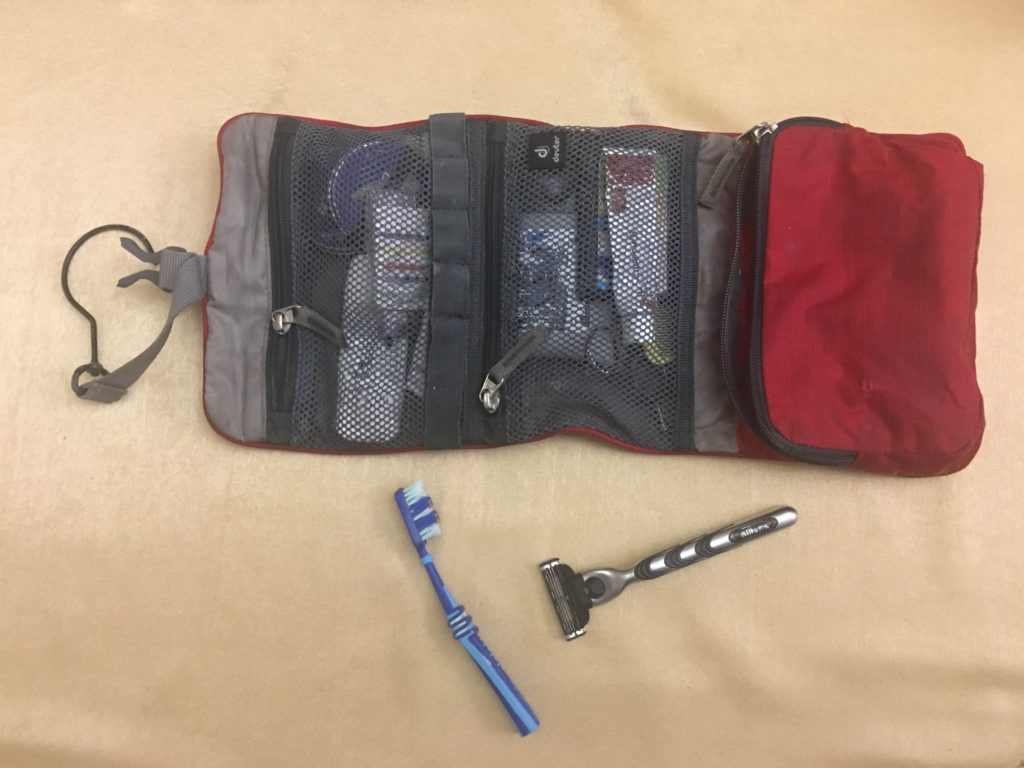
I want you to pay special attention to this gas burner with a mug. It's awesome! I saw Dima Yaskin's one like this during a trip around Mongolia. You can boil a litre of water with this device just in 4 minutes. In the mug you can boil tea, make coffee, cook soup, porridge and so on. It's easy to assemble and ignite by pressing the button (piezo). One small gas cylinder usage lasts for... very long! Before I found it I had bought a lot of petrol and kerosene stoves, but all of them are worse than this one.
This time I didn't take the bag attached to the tank. It seemed inconvenient to me to have one in Mongolia. At the petrol stations it needs to be removed and in general looks bulky. However, Oleg travelled with such a bag and he liked it. It's absolutely one's personal preference. As for me, I had a handbag on the handlebar with a window for the phone (in order to use it as a navigator). That was quite helpful. The bag is quite capacious. I put in it a knife, a pen, a charging cord from the USB on the handlebar, a cloth for wiping the visor, wet wipes, a lighter, some plastic straps, a little money, brochures and business cards (I received some on my way).
Tools and spare parts.
I placed a pump, pliers, an adjustable spanner, a standard set of keys, a tape and straps into a box between the trunk and the seat.
In a separate small bag in the side trunk I have a repair kit tires, end heads 8...19, a ratchet 3/4, an adapter, a pair of elongators to it, wirings, glue tubes of "Moment" and "Poxipol" brands, an insulating tape, a pack with bolts, screws and other BMW fasteners, rear brake pads and repair patches for the tires… Under the back seat I placed a screwdriver, a set of L-shaped wrenches and a standard tool.
That was enough for the trip.
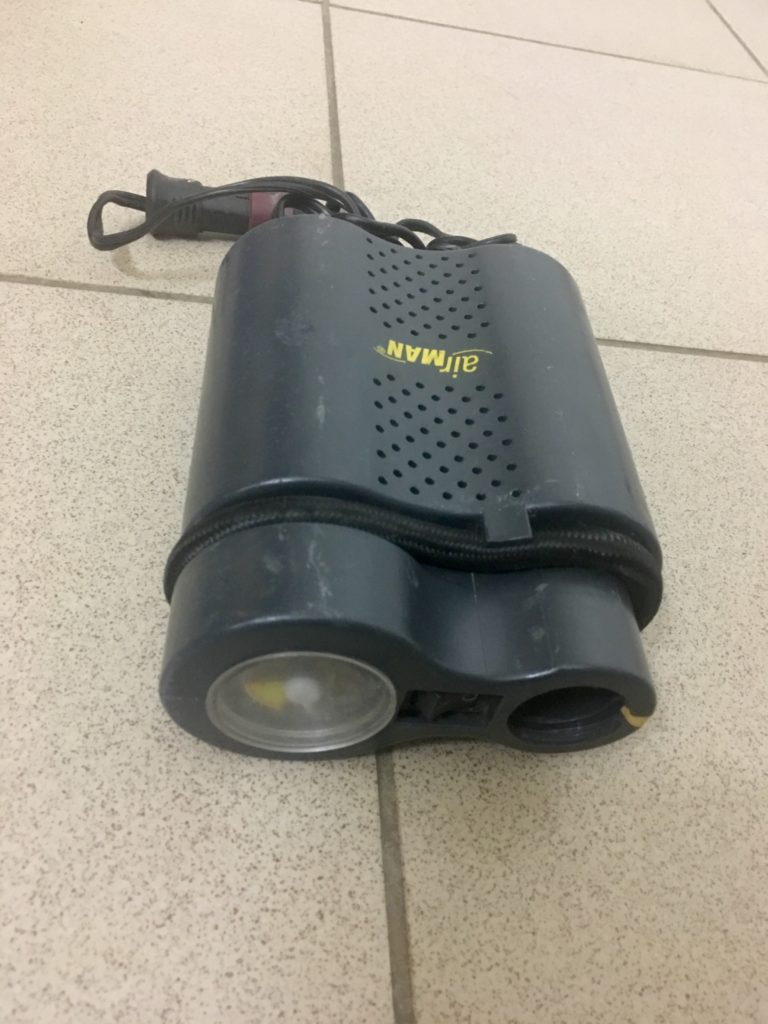
Yeah, all my photos were taken with IPhon 6S+. I suppose, the quality of pictures is good enough. Recently I stopped taking a video camera Go-Pro with me just because I'm too lazy to edit travel films afterwards. Not my cup of tea.
One more useful thing to take on a trip is a power bank to charge the phone and the scala rider. Not everywhere the electricity is accessible, so you may not have an ability to charge your phone, for example, in the yurt, or in the inn, in case you're lying on the bed, and the socket is placed on the opposite wall.
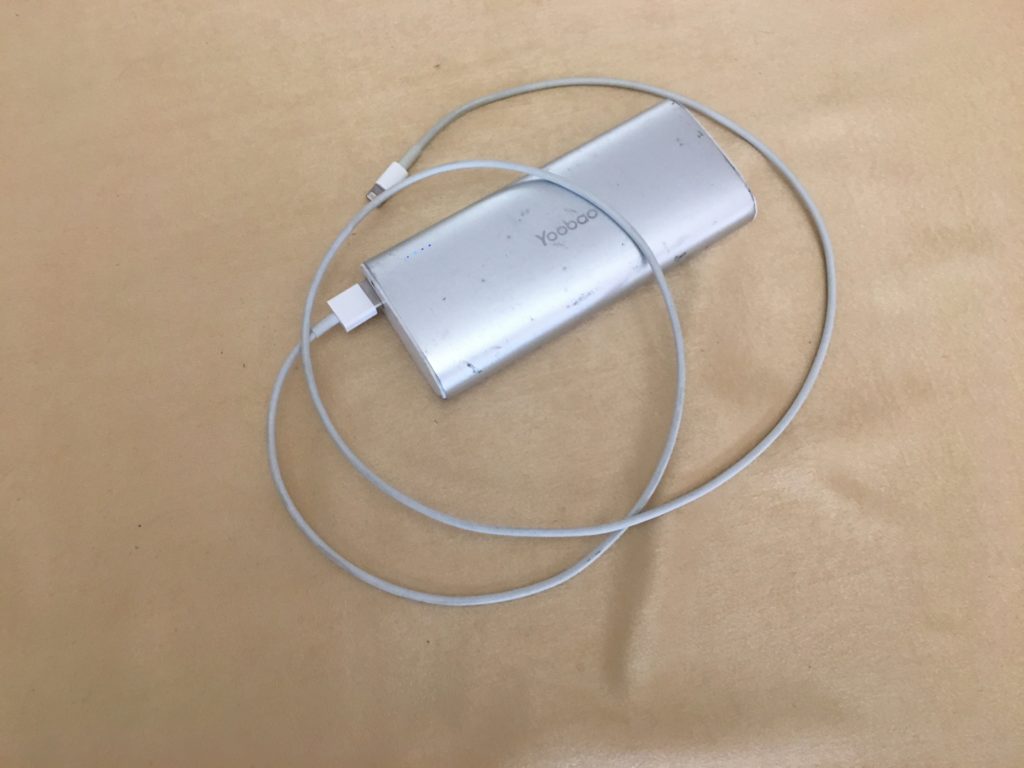
 Cap-travel.ru
Cap-travel.ru